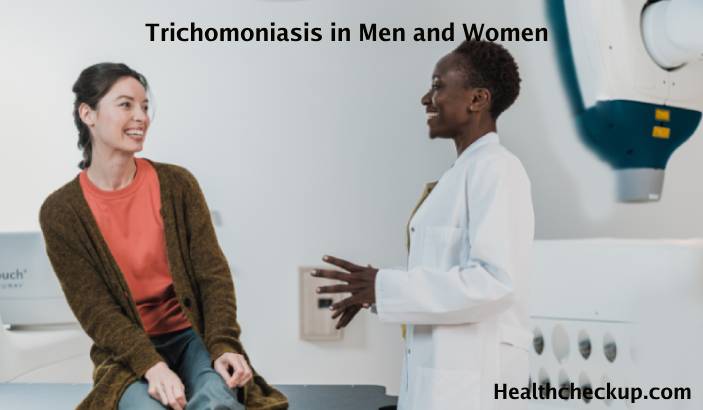Trichomoniasis, caused by the single-celled parasite Trichomonas vaginalis, is a sexually transmitted infection that affects millions of Men and Women worldwide. While it’s often associated with women, this infection can impact both sexes. In this article, we will delve into the intricacies of trichomoniasis in men and women, explore the distinctive symptoms, discuss the diagnostic process, and address the intriguing question of whether a woman can contract trichomoniasis on her own.
Trichomoniasis in Women
Understanding the Basics
Trichomoniasis in women is a common sexually transmitted infection that affects the urogenital tract, including the vagina. It’s often referred to as “trich” and is caused by the protozoan parasite Trichomonas vaginalis.
Symptoms in Women
- Vaginal Discharge: A hallmark symptom of trichomoniasis in women is a noticeable change in vaginal discharge. The discharge can vary in color from white, yellow, greenish, to frothy. It is often described as having a foul odor.
- Vaginal Itching and Burning: Women with trichomoniasis experience itching, burning, or irritation in the vaginal area.
- Pain During Sex: Some women report discomfort or pain during sexual intercourse.
- Painful Urination: Urinating can become painful or uncomfortable for women with trichomoniasis.
Can a Woman Get Trichomoniasis on Her Own?
One of the intriguing questions surrounding trichomoniasis is whether a woman can contract it without sexual contact. While sexual transmission is the most common mode of transmission, there is a rare possibility of self-infection. In very uncommon instances, a woman might introduce the parasite into her own vaginal area through contaminated objects or poor
practices. However, this is not the primary mode of transmission and is considered an exception rather than the rule.
Trichomoniasis in Men
Understanding the Basics
While trichomoniasis is often associated with women, it can affect men as well. Men typically become infected with Trichomonas vaginalis through sexual contact with an infected partner.
Symptoms in Men
- Urethral Discharge: Men with trichomoniasis experience urethral discharge, which can be clear or white.
- Irritation and Itching: Itching or irritation inside the penis may occur.
- Asymptomatic Cases: Importantly, many men with trichomoniasis do not display any symptoms (asymptomatic carriers), making it challenging to diagnose without testing.
Diagnosis
Testing for Women and Men
To diagnose trichomoniasis, healthcare providers typically collect a sample of vaginal or urethral fluid and perform laboratory testing. Various tests, including microscopy and nucleic acid amplification tests (NAATs), can detect the presence of the parasite.
Treatment
Medication for Women and Men
Trichomoniasis is treatable with prescription antibiotics, such as metronidazole (Flagyl) or tinidazole. Both partners should be treated simultaneously to prevent reinfection. It is essential to complete the full course of antibiotics as prescribed, even if symptoms improve before the medication is finished.
Complications and Risks
Health Consequences
Untreated trichomoniasis can lead to several complications in both men and women:
- Increased Risk of Other STIs: Trichomoniasis can increase susceptibility to other sexually transmitted infections, including HIV.
- Adverse Pregnancy Outcomes: In pregnant women, trichomoniasis has been associated with an increased risk of preterm birth and low birth weight.
Prevention
Safe Sexual Practices
The most effective way to prevent trichomoniasis and other sexually transmitted infections is through safe sexual practices:
- Condom Use: Consistent and correct use of condoms during sexual intercourse can reduce the risk of transmission.
- Regular STI Testing: Routine STI testing is crucial, especially for individuals with multiple sexual partners.
Conclusion
Trichomoniasis, caused by the parasitic protozoan Trichomonas vaginalis, is a common and often overlooked sexually transmitted infection that affects both men and women. While it presents with distinct symptoms in each gender, many cases go undiagnosed due to asymptomatic carriers. Early diagnosis and treatment are crucial to prevent complications and reduce the risk of transmission.
As for the intriguing question of whether a woman can get trichomoniasis on her own, the primary mode of transmission is sexual contact, and self-infection is exceedingly rare. Practicing safe sex, maintaining regular STI screenings, and open communication with sexual partners are key steps in preventing trichomoniasis and other sexually transmitted infections. With proper awareness and preventive measures, we can work towards reducing the prevalence of trichomoniasis and promoting sexual health for all.








